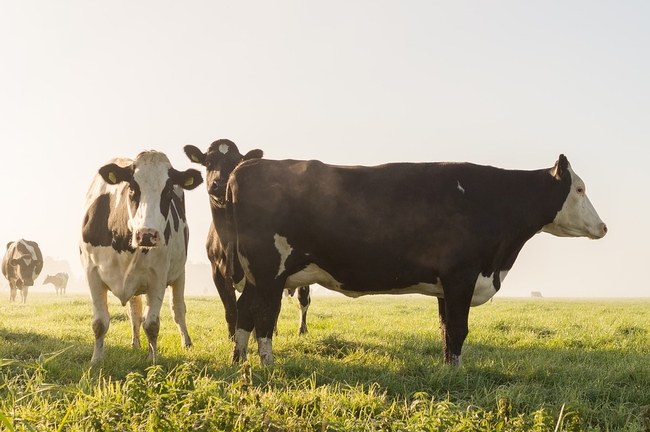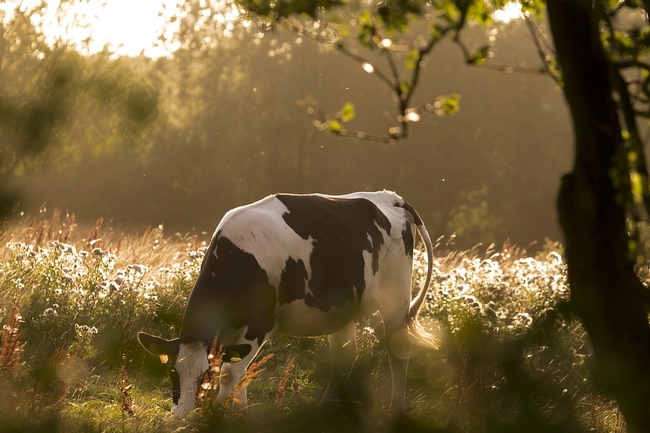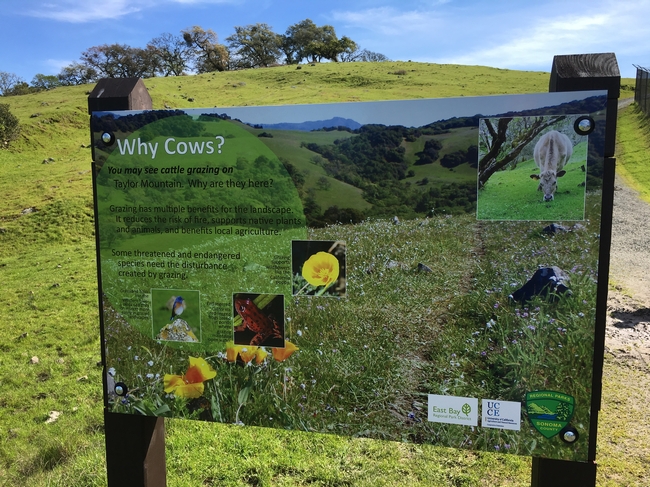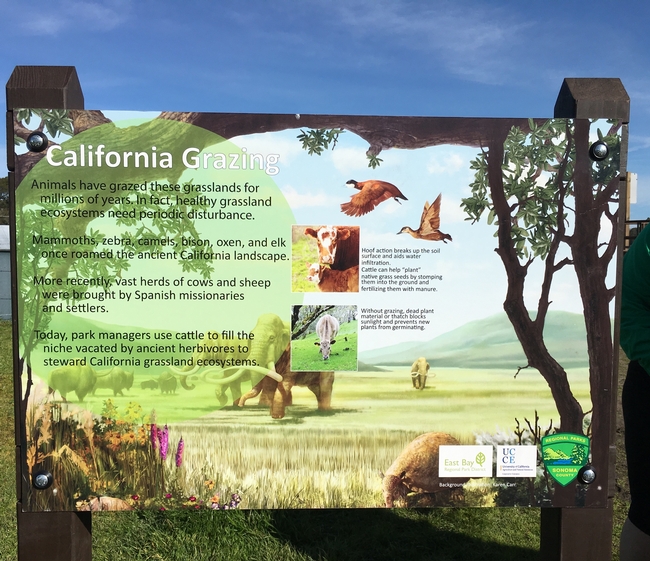- Author: Stephanie Larson
- Author: Reid Johnsen
- Editor: J. M.
Eight months after devastating fires swept through Sonoma County, our community has rallied to an ongoing recovery. Still, the tragedy of those wildfires remains fresh in the minds of our friends and neighbors. The lives and property that were lost last year can never be replaced. As the dry season begins a new and unfortunate truth comes to mind: California is a drought-prone state, and there will always be some risk of wildfire. In Sonoma and Marin Counties, active rangeland management is one of the most important actions that can be taken to reduce the risk of wildfire to our community.
Sonoma and Marin Counties comprise large amounts of rangeland. The key to reducing fire risk on rangeland parcels is effective management of the volume of flammable grasses, known as Residual Dry Matter (RDM), which exists on the land during the summer months. Historically, three methods have been employed to manage RDM: mowing, controlled burning, and grazing. However, mowing is rarely cost-effective at the landscape scale, and concerns over air pollution have significantly restricted the viability of controlled burning as a management technique. Grazing is the best remaining tool for RDM management, and it provides the additional social benefit of producing agricultural income.

There is only one affirmative agricultural easement in Sonoma County, Marin County has many more. Many conservation easements in Sonoma and Marin Counties have been managed by the same families for multiple generations, many have changed ownership with the easement attached. One of the primary advantages of conservation easements is that they typically allow existing agricultural practices to continue on the conserved parcel; however the economics of agriculture change over time. It might be more advantageous to sustain local agriculture, reduce fire risks, and keep our working landscapes “working” if conservation groups reassessed conversation easements written years ago. Climate change, ranching and farming economics and agricultural practices have changed and keep evolving. Agricultural operations that remain economically viable will keep our cultural heritage for generations to come.
Traditionally, when a landowner sells a conservation easement to a conservation group, the landowner receives a one-time lump sum payment in exchange for accepting permanent development restrictions on their land. It may be possible for a land trusts to manage its finances for greater returns or less risk relative to the options available to landowners. 
The University of California Cooperative Extension (UCCE) is finalizing a research project that has examined that equivalent, alternative payment structures, such as a perpetuity or variable annual payment, could provide greater welfare to both the landowner and the conservation group. Our preliminary research findings shows that many landowners state a preference for an alternative payment structure, and that heterogeneity in those preferences is correlated with self-identification as a rancher/farmer.
In order to evaluate changing perceptions of conservation easements over time, UC Cooperative Extension of Sonoma County, is conducting a phone survey of landowners in Sonoma and Marin Counties. This brief survey is aimed at all owners of parcels greater than 50 acres that currently support livestock or have the potential to support livestock. Full participation in the survey will help UC Cooperative Extension better meet the needs of the agricultural communities in Sonoma and Marin Counties. If you receive a call, your participation will be greatly appreciated. It's your opportunity to help us direct the future of conservation easements in Sonoma and Marin Counties.
- Author: Stephanie Larson
The University of California Cooperative Extension recognized rangelands and their importance in Sonoma County, creating the “Ecosystem Services Interpretative Signage” to increase awareness and knowledge of park visitors, mangers and decisions makers of working rangelands and the ecosystem services. Rangelands are also referred to as working landscapes, are locally managed and provide essential biological, scenic, economic, and recreational values locally and throughout the world. Working landscapes are threatened in many areas by development, conversion to 
Beyond the obvious benefits of beef cattle grazing such as food production, grazing can benefit individual plant and animal species, can help manage fire hazards, and, in the absence of natural disturbance regimes, help maintain Sonoma County's landscape structure. Beef cattle not only provide beef as food, they are also used as grazing tools, keeping weed or shrub invasion at bay, enhancing wildflower displays, or maintaining a low grassland canopy height to allow visibility, foraging, and movement of small mammals such as voles and ground squirrels. Rangelands not grazed or otherwise managed, especially where they abut or intergrade with shrublands, will become shrub invaded, which converts grasslands to coastal scrub. As well as increasing fire hazards, this conversion results in loss of coastal grasslands and; thus, loss of the species that occupy them. Fire and livestock grazing are the two main tools we can use to maintain grassland ecosystems. In Sonoma County, fire has become more difficult to use, livestock grazing is the most common and practical option. Maintaining rangelands has several benefits associated with water, including increasing water infiltration and increasing vernal pool inundation period for fairy shrimp and the California tiger salamander. In addition to ecosystems services associated with water, livestock grazing can also improve habitat for native annual forbs & grassland birds, control invasive weeds, reduce fire hazard, etc.


